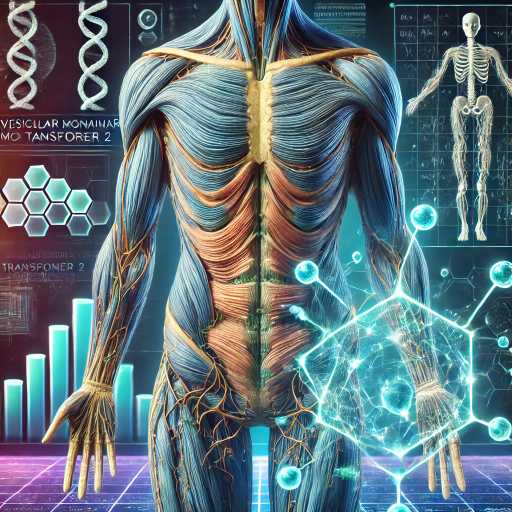Future of Medicinal and Drug Research: AI, Personalized Medicine, and Emerging Technologie
Antimicrobial resistance has increasingly grow to be a main public health challenge throughout the globe. The World Health Organization (WHO) has diagnosed antimicrobial resistance as one of the pinnacle 10 international public fitness issues facing humanity these days. Antibiotic resistance happens while micro organism and viruses evolve and adapt to become proof against antibiotics and different antimicrobial capsules, making it hard to deal with infections caused by those pathogens.
However, the field of medical era is constantly evolving, and researchers are usually developing new solutions to fight this problem. Recently, researchers have used synthetic intelligence (Al) to discover a new magnificence of antibiotics to deal with drug-resistant staph infections.
Staphylococcus aureus (Staph) is a type of bacteria that causes various infections, from minor skin infections to life-threatening infections which includes sepsis and pneumonia. Staph infections are mainly tough to treat while the micro organism grow to be resistant to antibiotics. Methicillin-resistant Staphylococcus aureus (MRSA), a stress of staph bacteria this is immune to methicillin and other antibiotics, is a massive public health subject.
The studies team, led through Dr. Jim Collins from the Massachusetts Institute of Technology, utilized Al to screen more than one hundred million chemical substances and discover the ones that would probably kill MRSA bacteria. The group used a gadget-gaining knowledge of algorithm to look for compounds with similar chemical structures to existing antibiotics, inside the hope that similar compounds would be effective in killing micro organism.
The Al algorithm recognized three compounds, called halicin, novobiocin, and clavulanic acid, that showed strong antistaphylococcal hobby. Halicin, specifically, was observed to be extremely effective in killing drug-resistant lines of Staph micro organism, together with MRSA. It works via disrupting the micro organism’s capability to maintain an electrochemical gradient across its mobile membrane.
Importantly, halicin is also powerful in opposition to other types of bacteria, which includes people who reason tuberculosis and E. Coli infections, as well as fungal infections. The researchers additionally located that halicin turned into powerful in killing bacteria that had already evolved resistance to different antibiotics.
The discovery of halicin represents a primary leap forward inside the combat towards antimicrobial resistance. However, there may be nevertheless tons work to be completed before this compound can be used in clinical settings. More research is wanted to determine the most efficient dosages and delivery strategies, as well as to analyze any ability side consequences.
The discovery of halicin using Al represents a large leap forward inside the conflict against antimicrobial resistance. The use of device mastering and other AI technology in drug discovery and development is possibly to play an increasingly vital function inside the destiny of drugs. With persevered innovation and studies, we may see a future in which antibiotic resistance is no longer a prime public fitness hazard.
The discovery of halicin and different capability new antibiotics using AI is an interesting development, specially given the growing rate at which bacteria and viruses are getting resistant to current remedies. In addition, AI has the capacity to accelerate the drug discovery procedure and reduce the price of drug development.
One of the benefits of AI in drug discovery is that it is able to analyze amazing amounts of records and identify patterns that human analysts may want to pass over. AI can also screen a bigger wide variety of capability drug candidates than traditional methods, that can speed up the drug development timeline.
However, coming across new antibiotics is only one piece of the puzzle. The challenge now could be to apply these discoveries to deliver new tablets to marketplace and to make sure their effective use in scientific settings. This will require collaboration among researchers, clinicians, regulatory our bodies, and coverage makers to ensure that new pills are evolved competently and successfully, and that they are used in a way that minimizes the hazard of resistance.
In addition, it’s critical to observe that the overuse and misuse of antibiotics is a major contributor to the hassle of antimicrobial resistance. Therefore, efforts to combat resistance should also awareness on reducing the useless use of antibiotics, selling suitable prescribing practices, and educating sufferers and healthcare experts approximately the significance of right antibiotic use.
The discovery of halicin and different capacity new antibiotics the use of AI is an thrilling development that gives hope for the future of antimicrobial treatment. Continued studies and improvement in this area, as well as efforts to promote accountable antibiotic use, are critical to addressing the task of antimicrobial resistance and making sure the health and nicely-being of people international.
In addition to the usage of AI in drug discovery, there are other interesting tendencies in medicinal and drug studies which might be probable to shape the future of healthcare.
One such development is personalized medicinal drug, which involves tailoring clinical remedies to an person’s genetic make-up, life-style, and other particular characteristics. Advances in genomics and different technology have made it feasible to investigate a affected person’s genes and perceive precise remedies which can be possibly to be effective for that individual.
Another area of consciousness is regenerative medicine, which aims to regenerate or update broken or diseased tissue and organs. This should contain using stem cells to grow new tissue, developing 3D printing generation to create replacement organs, or the use of gene enhancing tools like CRISPR to restore broken genes.
Nanotechnology is every other location of studies with capability packages in drug shipping and clinical remedy. Nanoparticles may be used to goal specific cells or tissues, and can decorate the capacity of medication to penetrate cell membranes and tissues. This should result in greater effective remedies with fewer side effects.
In drug studies in particular, there’s growing hobby in herbal products and conventional medicines as capability sources for brand new drug compounds. These products were used for centuries by extraordinary cultures, and plenty of have shown promising healing results. By studying the chemicals in those herbal merchandise and figuring out the active components, researchers hope to expand new pills with fewer facet results than traditional pharmaceuticals.
The future of medicinal and drug studies is probable to be characterised by using a more emphasis on customized medication, regenerative medicinal drug, nanotechnology, and the usage of herbal products as potential sources for brand new capsules. Continued innovation and studies in those areas has the ability to revolutionize healthcare and enhance consequences for patients with a huge range of clinical conditions.
Appointment:
https://linktr.ee/drsskro
#MedTechRevolution , #AIinMedicine , #PersonalizedMedicine , #EmergingTechnologies , #HealthTech , #BigDataHealthcare , #PrecisionMedicine , #PharmaInnovation , #DigitalHealthcare , #MedicalResearch













